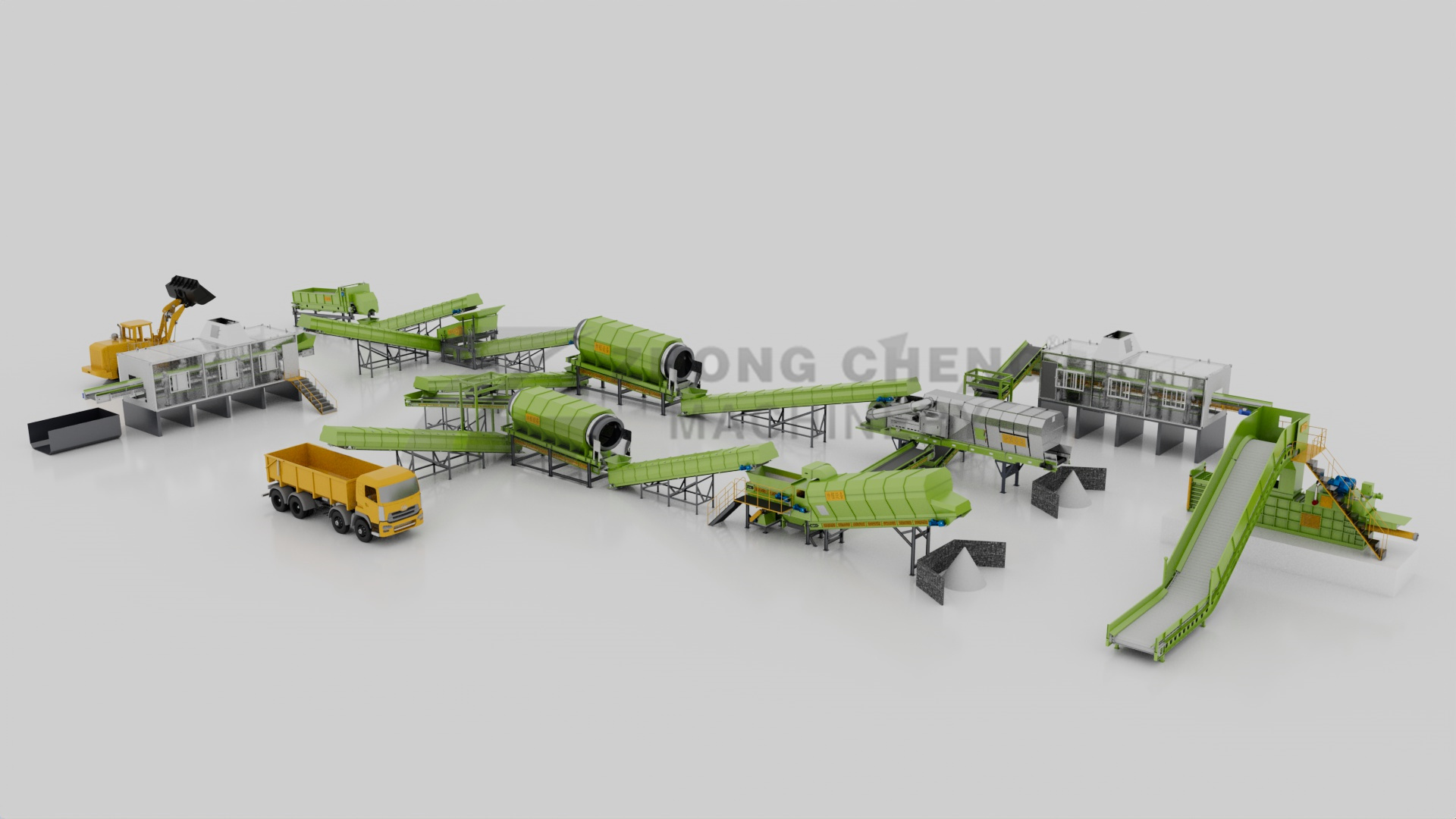waste sorting equipment
Waste sorting equipment refers to machines and systems designed to separate and categorize different types of waste materials. This equipment helps improve recycling processes, reduce landfill use, and ensure that various waste streams are properly managed.
Common types of waste sorting equipment include:
Conveyor Belts: These move waste materials along a production line for further sorting.
Shredders: These break down large or bulky items into smaller pieces to make them easier to sort and process.
Air Classifiers: These use air flow to separate lighter materials from heavier ones, often used for sorting paper from plastics or metals.
Magnetic Separators: These extract ferrous metals (like iron and steel) from mixed waste streams using magnets.
Optical Sorters: These use cameras and sensors to identify and sort materials based on their color, shape, or chemical composition.
Trommels: These rotating drums separate materials by size, with smaller particles passing through the holes and larger ones remaining inside.
Ballistic Separators: These use a combination of motion and gravity to separate materials by size, shape, and density.
Density Separators: These divide materials based on their density, useful for separating materials like plastics from glass or metals.
These machines often work together in automated systems to efficiently handle large volumes of waste, making recycling and waste management processes more effective.

Waste sorting equipment is used in various settings where waste needs to be processed and managed effectively. Some of the primary locations and applications include:
Recycling Facilities: Sorting equipment is used to process and separate recyclables like paper, plastics, metals, and glass, making it easier to prepare materials for recycling.
Municipal Waste Management Centers: These centers handle large volumes of household and commercial waste, using sorting equipment to separate different types of waste for appropriate disposal or recycling.
Composting Facilities: Equipment is used to separate organic waste from non-organic materials before composting.
Waste-to-Energy Plants: Sorting equipment helps in separating recyclable and non-recyclable materials before they are converted into energy through processes like incineration or gasification.
Industrial Waste Management: Factories and manufacturing plants use sorting equipment to manage and recycle waste produced during production processes.
Landfills: Some landfills use sorting equipment to reduce the amount of recyclable and compostable materials that end up in landfills.
Construction and Demolition Sites: Sorting equipment helps separate construction debris into reusable materials like wood, metal, and concrete, reducing the amount of waste sent to landfills.
Electronic Waste Recycling Centers: These centers use specialized sorting equipment to handle and recycle electronic waste, separating valuable metals and components from other materials.
In all these settings, the goal is to increase recycling rates, reduce waste volumes, and ensure that materials are handled in an environmentally friendly manner.
-
 Trommel screenTrommel screen, also known as drum screens, are widely used in various industries for sorting and separating materials.Get Quote
Trommel screenTrommel screen, also known as drum screens, are widely used in various industries for sorting and separating materials.Get Quote -
 Crop straw double shaft shreddApplications:Biomass Energy Production: Shredded straw can be used as a feedstock for bioenergy plants to produce electricity or heat.Livestock Feed: Reduced-si...Get Quote
Crop straw double shaft shreddApplications:Biomass Energy Production: Shredded straw can be used as a feedstock for bioenergy plants to produce electricity or heat.Livestock Feed: Reduced-si...Get Quote -
 Zhongcheng Air Drum SeparatorAir drum separators effectively separate lightweight materials (e.g., plastics, paper) from heavier materials (e.g., metals, glass). This high efficiency is cru...Get Quote
Zhongcheng Air Drum SeparatorAir drum separators effectively separate lightweight materials (e.g., plastics, paper) from heavier materials (e.g., metals, glass). This high efficiency is cru...Get Quote
-
2023-01-11Ballistic SeparatorBallistic separators are a crucial component in modern recycling and waste management systems, contributing to more efficient resource recovery and environmenta...
-
2024-06-08Five factors influencing the output of a drum screen.The input efficiency and separation efficiency of the drum screen are controlled by the screen hole size, drum screen diameter, rotation speed, baffle type and ...
-
2023-01-13Bag OpenerBag opener or bag opener system is a mechanical device used to automatically open and empty bags containing bulk materials. This system is commonly used in indu...
-
2024-10-23Solid waste recycling plantOur company engaged in waste sorting system . We are professional about waste sorting system . We have professional technical team. Professional technical team...
-
2024-05-28Garbage screening drum screenTrommel screen is consisting of five parts: drum, frame, hopper, reducer and motor.After the material goes into the drum, it is screened along with the rotation...



